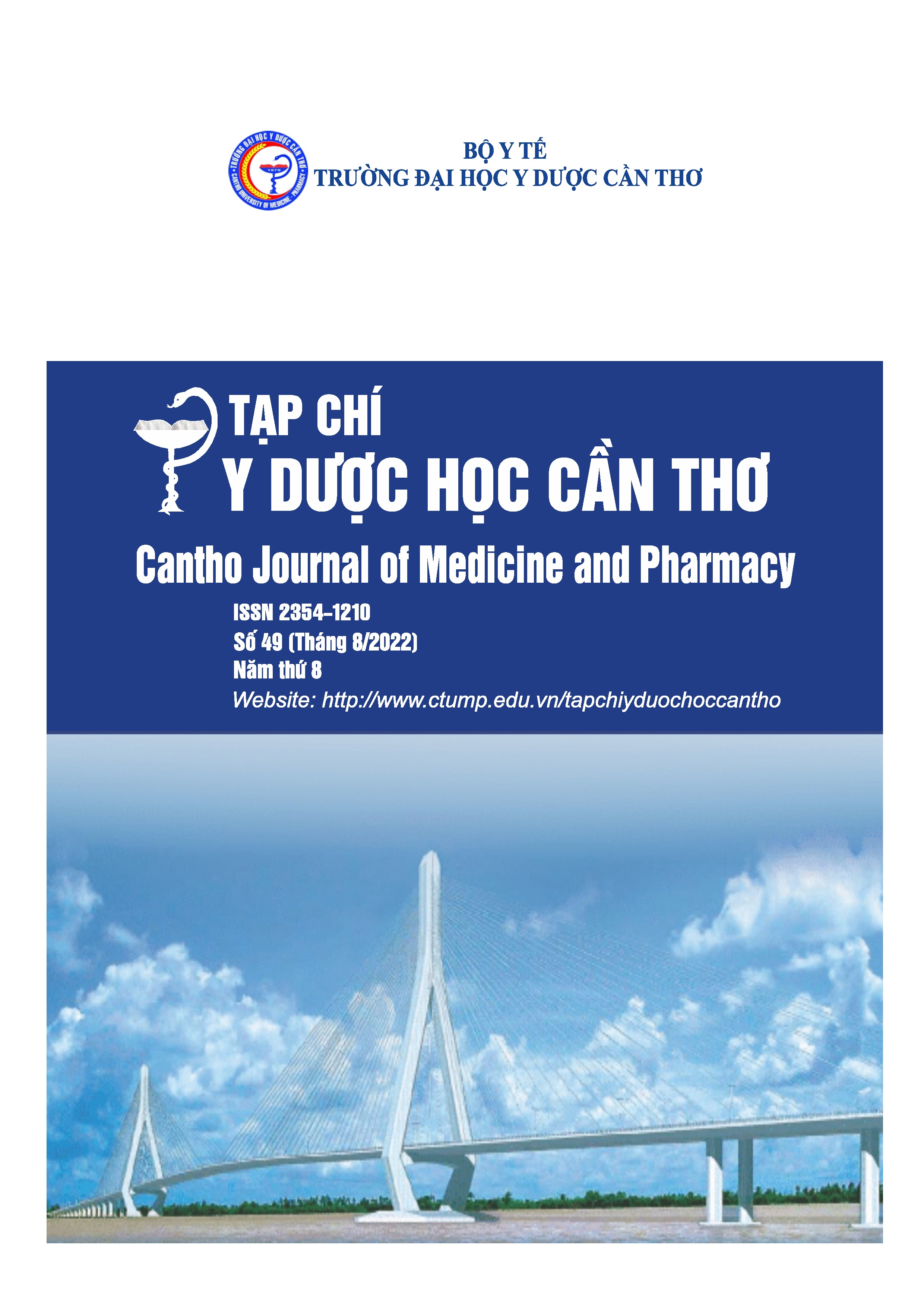MORPHOLOGY FEATURES OF TEMPOROMANDIBULAR IN TEMPOROMANDIBULAR DISORDER PATIENT
Main Article Content
Abstract
Background: Temporomandibular disorder is a general term for oropharyngeal pain, which is the most common non-dental pain in the maxillofacial region. Imaging diagnosis is considered a useful adjunct in the diagnosis of temporomandibular disorders, especially conebeam computed tomography. Objectives: Evaluate the morphology features of temporomadibular joint in the temporomandibular disorder patients. Materials and methods: Thirty-two patients with temporomadibular disorder who was examed and treated at Odonto-Maxillo-Facial Hospital at Ho Chi Minh city from Jan,2021 to May,2021. Each patient was assessed the morphology features of temporomadibular joint include condyle shape and condyle-temporal fossa relationship. The data was analyzed by SPSS software. Results: Condyle head classify five shapes. In this classification, most condyle shape is triangle. The condyle-temporal fossa relationship was identified the joint space include anterior joint space, superior joint space and posterior joint space. The result is the joint space decrease from anterior to posterior. Conclusions: In temporomandibular disorder patients, the most of condyle have triangle shape. The condyle is located at posterior in the temporal fossa.
Article Details
Keywords
Morphology features, condyle, joint space
References
2. Dion Tik Shun Li, Yiu Yan Leung (2021), “Temporomandibular Disorders: Current concepts and controversies in diagnosis and management”, Diagnosis (Basel), 11(3), pp.459.
3. Larheim, T.A.; Abrahamsson, A.K.; Kristensen, M.; Arvidsson, L.Z. (2015), “Temporomandibular joint diagnostics using CBCT”, Dentomaxillofac. Radiol, 44, 20140235.
4. Koyama J, Nishiyama H, Hayashi T. (2007), “Follow- up study of condylar bony changes using helical computed tomography in patients with temporomandibular disorder”, Dentomaxillofac Radiol, 36, pp.472-477.
5. Alves (2013), “Morphological Characteristics of the Temporomandibular Joint Articular Surfaces in Patients with Temporomandibular Disorders”, Int. J. Morphol., 31(4), pp.1317-1321.
6. Jaime Gateno (2004), “A Comparative Assessment of Mandibular Condylar Position in Patients with Anterior Disc Displacement of the Temporomandibular Joint”, J Oral Maxillofac Surg. 62, pp.39-43.
7. Ren, Y.-F., Isberg, A., & Westesson, P.-L. (1995), “Condyle position in the temporomandibular joint”, Oral Surgery, Oral Medicine, Oral Pathology, Oral Radiology, and Endodontology, 80(1), pp.101-107.
8. Dion Tik Shun Li, Yiu Yan Leung (2021), “Temporomandibular Disorders: Current concepts and controversies in diagnosis and management”, Diagnosis (Basel), 11(3), pp.459.
9. Yale SH, Allison BD, Hauptfuehrer JD. (1966), “An epidemiological assessment of mandibular condyle morphology”, Oral Surg Oral Med Oral Pathol, 21, pp.169-177.
10. Kazumi Ikeda (2009), “Assessment of optimal condylar position with limited cone-beam computed tomography”, Am J Orthod Dentofacial Ortho, 135, pp.495-501.
11. Vandeput, P.-J. Verhelst, R. Jacobs, E. Shaheen, G. Swennen, C. Politis (2018), “Condylar changes after orthognathic surgery for class III dentofacial deformity: a systematic review”, Int. J. Oral Maxillofac. Surg.
12. Anuna Laila Mathew (2011), “Condylar Changes and Its Association with Age, TMD, and Dentition Status: A Cross-Sectional Study”, International Journal of Dentistry, pp.1-7.
13. J F G de Farias et al. (2015), “Correlation between temporomandibular joint morphology and disc displacement by MRI”, Dentomaxillofacial Radiology, 44, 20150023.
14. Seren, E., Akan, H., Toller, M. O., & Akyar, S. (1994), “An evaluation of the condylar position of the temporomandibular joint by computerized tomography in Class III malocclusions: A preliminary study”, American Journal of Orthodontics and Dentofacial Orthopedics, 105(5), pp.483-488.
15. May Al-koshab (2015), “Assessment of Condyle and Glenoid Fossa Morphology Using CBCT in South-East Asians”, Plos one,10(3), e0121682.


